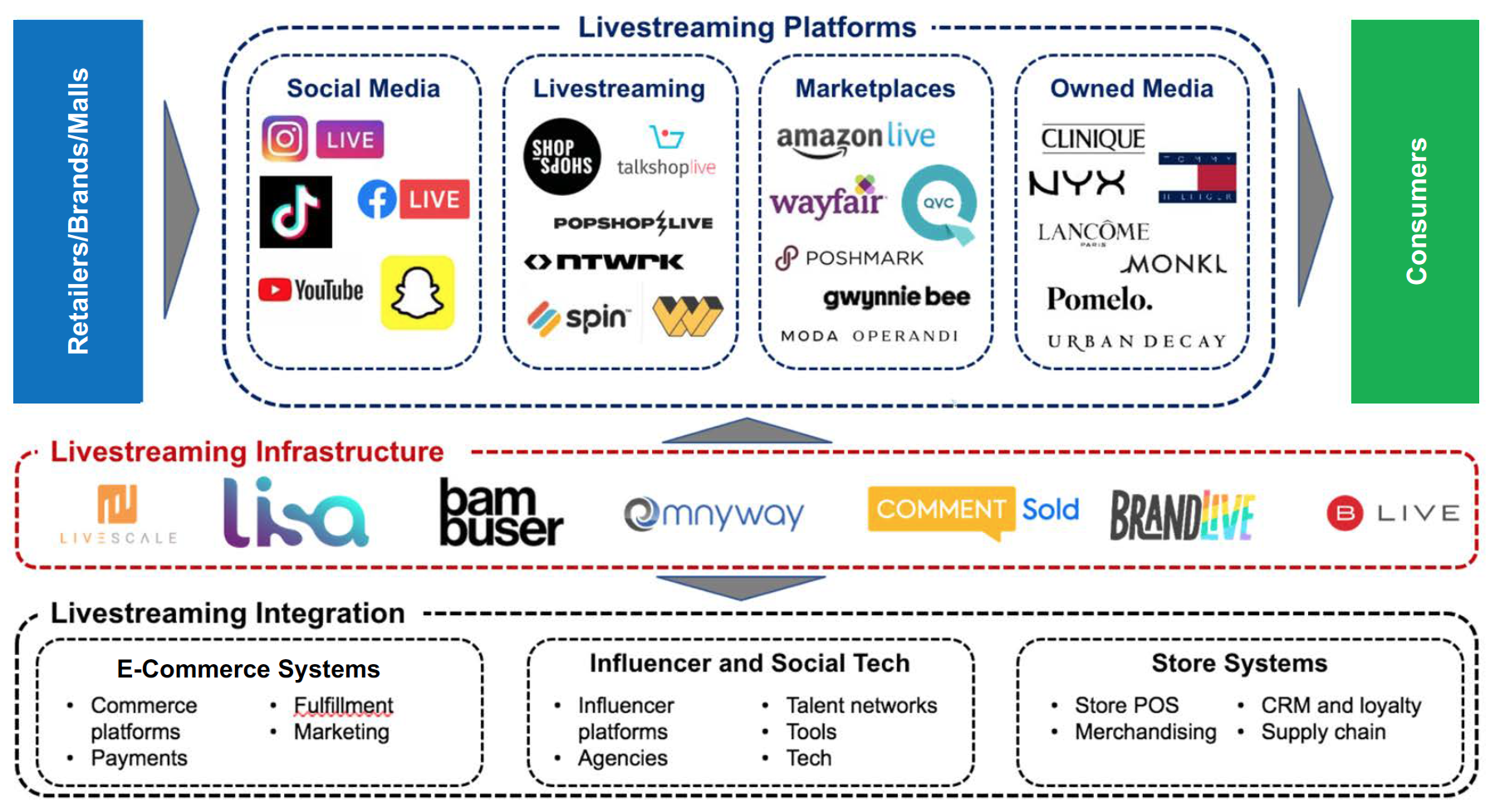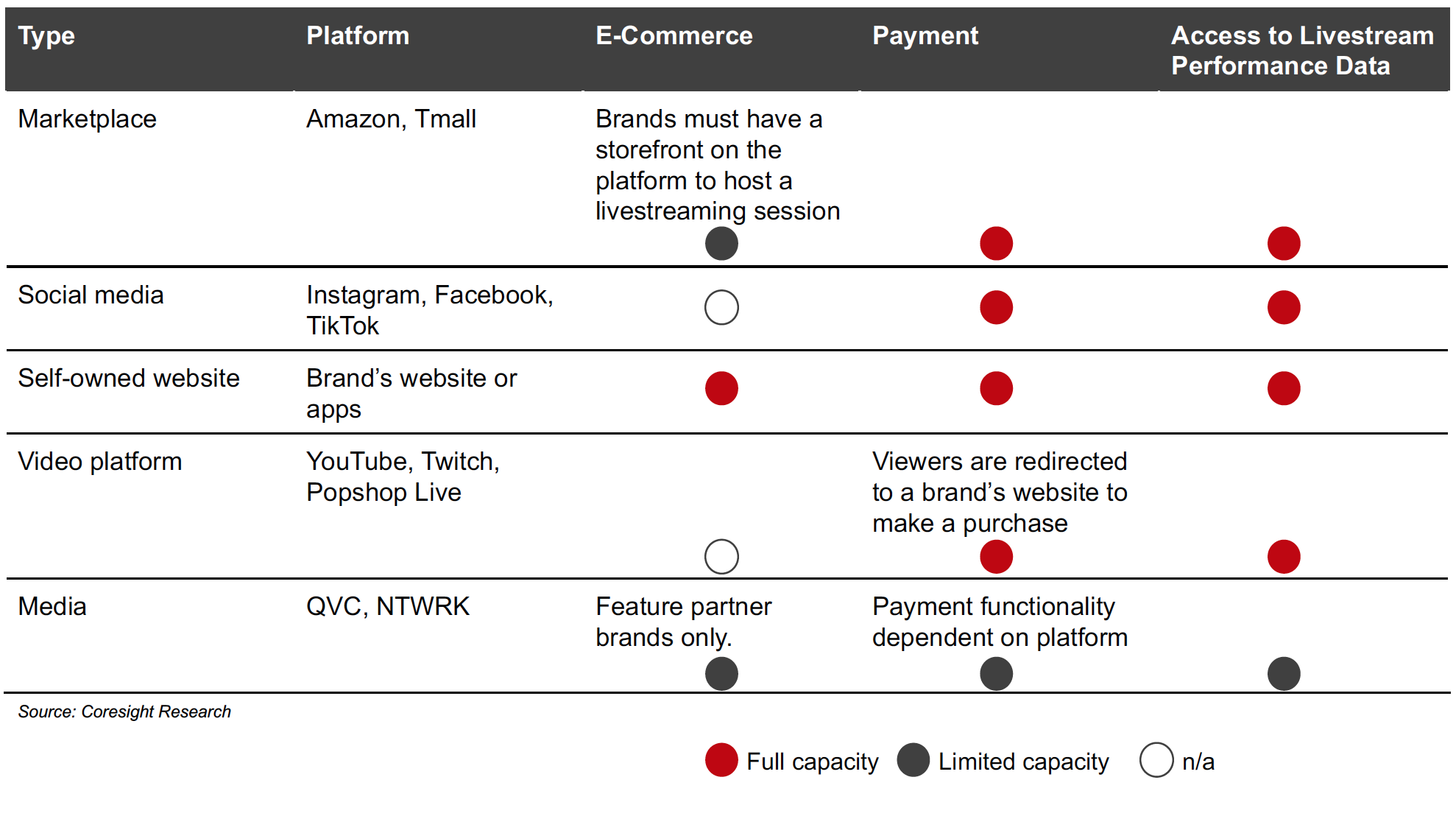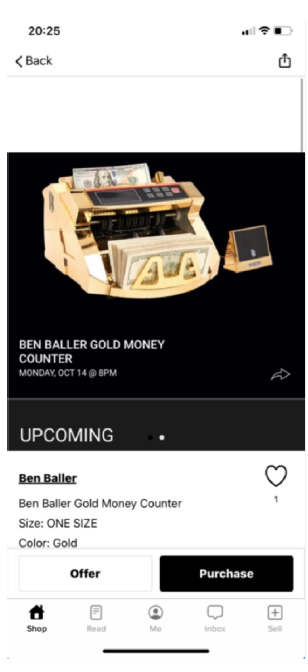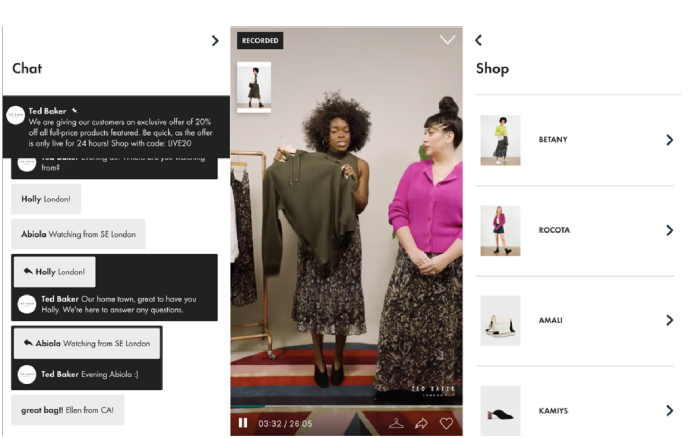
albert Chan
What’s the Story?
Our Playbook series provides recommendations for brands and retailers seeking to tap growth segments and emerging trends. Coresight Research has identified livestreaming as one of the key trends to watch in 2021.
Livestreaming e-commerce provides a new, digital channel for retailers to connect with consumers and influence their purchase decisions. Livestreaming can enrich the shopping experience and offer consumers exclusive promotions, while giving retailers the opportunity to educate shoppers about their products and expand their consumer reach.
Livestreaming e-commerce is well established in China and is now becoming an essential marketing tool for brands and retailers in the US, as it provides interactive content in real time, directly engaging consumers.
Although US retailers can take learnings from China, they will need to adapt livestreaming e-commerce strategies to US market conditions to effectively engage consumers and drive sales.
In this Playbook, we present five best practices for US brands and retailers to develop winning livestreaming e-commerce strategies, using global examples of successful livestreaming, including from China.
The US Livestreaming E-Commerce Ecosystem
The livestreaming e-commerce ecosystem comprises three layers: platforms, infrastructure and integration.
- Possible platforms through which to launch livestreaming cover social media, marketplaces and owned websites, as well as dedicated livestreaming sites such as Popshop Live. It is essential for retailers, brands and shopping malls to use the most appropriate platform to connect with their target consumers.
- Brands and retailers can work with tech partners such as Bambuser, Lisa, Livescale or Omnyway to set up their livestreaming infrastructure and thus enable digital commerce.
- The new shopping format involves the integration of e-commerce systems, influencer networks and social technology, and store systems to offer consumers a seamless shopping journey—helping brands and retailers to boost engagement and drive conversion.
Figure 1. The US Livestreaming E-Commerce Ecosystem, 2021
[caption id="attachment_126461" align="aligncenter" width="700"] Source: Coresight Research[/caption]
Source: Coresight Research[/caption]
Playbook: Five Best Practices for Livestreaming E-Commerce in the US
We present five best practices that brands and retailers can follow to achieve high engagement rates in livestreaming and thus leverage the format to drive sales.
Figure 2. Five Best Practices in US Livestreaming E-Commerce
[caption id="attachment_126213" align="aligncenter" width="500"] Source: Coresight Research[/caption]
Source: Coresight Research[/caption]
1. Leverage Livestreaming To Expand Consumer Reach
Amid the pandemic-led shift to e-commerce, livestreaming offers an alternative channel for consumers to shop with confidence from the comfort of their home. As with the digital channel in general, brands and retailers can extend their reach to more consumers as they are not tied to a geographical location. The livestreaming format is also a social one, meaning that consumers are likely to share their experiences online and follow recommendations from others, helping brands to stimulate consumer demand and create more shopping opportunities.
Social media is an important marketing channel for brands to showcase their products and drive conversion, particularly in the context of increased reliance on digital channels due to Covid-19 retail shutdowns.
According to a Coresight Research survey of US consumers conducted in March 2021, 80.6% of respondents said they use social media platforms. Of these social media users, 60% said they use social media as part of their shopping process, which includes discovering products, researching purchases or buying products.
Target Gen Z and Millennial Consumers
Livestreaming through popular social media can help brands to tap younger demographics, as Gen Z and millennials are the primary users of platforms such as Facebook, Instagram and TikTok.
More specifically, our March 2021 survey on social commerce found that consumers aged 25–34 are the main users of social channels, and this age group reported that they make purchases via social media in the apparel, beauty and personal care, electronics and food categories.
Livestreaming presents exciting opportunities for young consumers to connect with their favorite brands for entertainment, as well as presenting a new digital channel for shopping.
 |
Moncler rolled out a branded hash tag challenge #MonclerBubbleUp, on TikTok on December 14, 2020. The campaign featured influencers Charli D’Amelio, Michael Le, Bella Poarch, and Abby Roberts. The task involved viewers wrapping themselves in something resembling Moncler’s puffy, bubbly winter coats, such as sleeping bags and bubble wrap. As of April 19, 2021, the hashtag had received more than 7.4 billion views. Source: TikTok |
 |
Gucci yielded surprisingly high engagement views by sharing TikTok content made by Morgan Presley, the inventor of the viral #GucciModelChallenge, in September 2020. As of April 19, 2021, the hashtag had accumulated over 240 million views. Source: TikTok |
Amid pandemic-led retail lockdowns, some brands and retailers in the US have repurposed their store associates to host live beauty consultations with customers—leveraging their expertise and customer service skills.
- According to beauty company Estée Lauder, online sales grew 60% in its first quarter of fiscal 2021, ended September 30, 2020. The company attributed this growth to its new and improved digital services, which include shoppable livestreams and virtual consultations by its Bobbi Brown and La Mer cosmetics brands.
We expect live, digital consultations to become increasingly popular among consumers due to the convenience and personalization that the format provides. The service is likely to be a key competitive differentiator for brands and retailers to attract new customers moving forward.
 |
La Mer provides one-to-one live consultation sessions, lasting 30–45 minutes. Typically, the consultant recommends three products during the session and sends a follow-up email on the products discussed with click-to-buy links.
Source: La Mer |
 |
Bobbi Brown has hosted one-to-many virtual events for all shoppers since June 23, 2020. According to the brand, 46% of people convert from the consultation within three hours.
Source: Bobbi Brown |
2. Integrate the Right Platforms To Provide a Seamless Shopping Experience
Today’s consumer expects convenience and immediacy when shopping, and livestreaming e-commerce can meet this demand by reducing friction in the shopping journey. However, brands and retailers should make sure that they choose the most appropriate platform to host sessions, taking checkout capabilities and back-end infrastructure into account.
An integrated livestreaming platform for browsing, checkout, customer service and product reviews can increase conversion rates and customer retention.
Brands can offer livestreaming promotions through their existing storefront in marketplace or social channels. Alternatively, they could launch a dedicated landing page for livestreaming, which can be facilitated by livestreaming tech agencies such as Bambuser, Lisa, Livescale and Omnyway.
[caption id="attachment_126226" align="aligncenter" width="700"] Source: Coresight Research[/caption]
Source: Coresight Research[/caption]
Choose Livestreaming Platform To Target Potential Audience
Brand's website: loyal customers
 |
Clinique drives consumer growth through celebrity-hosted live events and themed tutorials.
Source: Clinique |
Social media channels: young consumers
 |
Small businesses such as Simply with Sarah Gibson host livestreaming sessions to promote products through through Facebook Live.
Source: Facebook |
Dedicated livestreaming platforms: niche groups
 |
NTWRK provides exclusive collections and limited-time deals for specialized products via livestreams. A gold money-counting machine attracted 40,000 people who waited in a virtual line to buy the item.
Source: NTWRK |
Facilitate In-Video Checkout To Provide Convenience
In-video/app checkout is critical to reduce friction and thus boost conversion.
According to Coresight Research’s recent survey, 89.4% of US consumers who use social media as part of the shopping process report giving up making a purchase because of a lack of in-platform checkout functionality.
- July 2020. Google launched shoppable livestreaming platform Shoploop with in-app payment functionality.
- May 2020. Facebook Shops was launched as its own e-commerce platform for selling the products displayed on stories and advertisements, with an in-app checkout feature.
- June 2019. Snapchat rolled out native checkout to five influencers’ accounts and enabled Snapchat Ads to connect with in-app Shopify stores for brands.
- March 2019. Instagram enabled checkout with 26 brands (including NIKE, Revolve, Warby Parker and Zara).
3. Use Charismatic Hosts To Strengthen Viewer Engagement
Emotionally connecting to consumers will ultimately improve sales conversion by building trust among a brand’s customer base. A charismatic host plays a critical role in persuading viewers to make a purchase during a livestreaming session. Viewers are also able to directly ask hosts about the products in real time, so enthusiastic and knowledgeable hosts are key.
Celebrities and Key Opinion Leaders (KOLs)
Brands can leverage the popularity of celebrities and KOLs to drive traffic and influence consumers’ purchase decisions.
Our survey revealed that 47.9% of US consumers who use social media as part of the shopping process follow influencers or celebrities on social media.
In China, top livestreaming e-commerce Austin Li and Viya managed to generate sales of over ¥1 billion (around $150 million) in non-refundable pre-sales deposits on October 21, 2020, (the first day of Singles’ Day promotions), according to Forbes.
 |
bareMinerals had Hailey Bieber host a live event on its website on March 2, 2021.
Source: bareMinerals |
 |
Lancôme has partnered with influencers Chiara Ferragni, Anna Dello Russo and Lisa Eldridge using Livescale. A live event on November 2, 2020 attracted 46,000 customers.
Source: Lancôme |
In-House Associates and Executives
We expect to see more brands host their own livestreaming sessions, turning employees into influencers to deliver a more authentic experience. This strategy also reduces hosting costs and ensures that consumers have access to professional knowledge on the products.
 |
JCPenney launched a live shopping series called JCPLive on its website, YouTube and via Facebook Live in December 2020. Divided into different episodes, each stream is hosted by different JCPenney staff as well as influencer guests, with a focus on different product categories.
Source: JCPenney |
 |
Mall of America collaborated with livestreaming shopping platform Popshop Live in September 2020 to offer viewers virtual in-mall shopping experiences hosted by its own associates.
Source: Mall of America |
4. Create a Sense of Urgency and Product Scarcity To Drive Conversion
A good product at a low price is the golden bait for any marketing campaign. In livestreaming, brands can promote their bestselling products and increase consumer excitement by offering hot deals that are exclusive to the livestream viewers.
Hot Deals and Hero Products
High-quality products at low prices are always appealing to consumers. In a live shopping program, brands promote their bestselling products and increase consumer excitement by offering hot deals that are exclusive to the livestream viewers.
L'Oréal's “My Beauty Box” is a set of 10 selected hero items from premium beauty and skincare brands in China. The set is released on a monthly basis with new products every time, creating a sense of mystery and excitement. KOLs host box openings via livestreaming to pique consumer interest and drive sales.
 |
KOLs presenting My Beauty Box received 119,000 likes (left) and 135,000 likes (right) on TikTok, as of February 22, 2020.
Source: TikTok |
 |
Fred Segal Live is a weekly shoppable livestream created using TalkShopLive, through which the retailer offers incentives to buy featured products within 72 hours.
Source: Fred Segal Website |
Limited-Time Offers and Limited-Quantity Products
Hot deals offered through livestreaming sessions should be available in a limited timeframe to accelerate consumers’ decision-making process: Viewers will feel that they need to make a purchase quickly to avoid missing out on the deal.
Similarly, brands can make products available in limited quantities to increase exclusivity, thus making products more appealing to viewers and rewarding shoppers who make purchases quickly.
 |
Cosmopolitan magazine collaborated with flexible payment provider Klarna to hold a two-day live shopping event on ShopShops on March 1, 2021. Macy’s participated, offering exclusive deals to shoppers across brands such as Adidas, Bluemercury, Foot Locker, Lady Gaga’s Haus Laboratories.
Source: ShopShops |
 |
Ted Baker offered exclusive 20% discounts during the live shopping broadcast on its website on March 11, 2021.
Source: Ted Baker |
5. Pivot to Entertaining Content To Engage with Consumers
Alongside the consumer shift to e-commerce amid the Covid-19 pandemic, shoppers have looked for online entertainment and social interaction as they have spent more time at home. Brands and retailers can capitalize on this trend to provide immersive experiences when livestreaming and thus increase consumer engagement.
Brands and retailers can increase the traction of their livestreaming events by providing early access to flash sales as well as hosting competitions, for example. Brands can also enhance consumer loyalty by offering rewards for sharing promotions with their network.
Retain Viewers Through Entertainment
Entertainment lies at the centre of live commerce, keeping audiences engaged in a livestreaming session for longer periods of time. Brands and retailers in China have created various entertaining programs for consumers to keep watching and shopping on the same channel.
Moreover, hosts often use a lottery feature to offer giveaways throughout the show, which gets the audience engaged and primed to click. Giving consumers opportunities to win prizes—such as giveaway or exclusive discounts—helps to build a sense of added value.
 |
JD.com collaborated with Fun Age Entertainment, a popular comedy film company in China, on a six-hour live shopping show during Singles' Day 2020. The live show drove a 60% increase in visits to JD.com, according to the company.
Source: JD Live |
Incorporate AI and AR To Elevate the Customer Experience
Brands can leverage artificial Intelligence (AI) and augmented reality (AR) technology to boost engagement and increase the likelihood of consumers making a purchase.
AR is particularly effective in the beauty sector, which is a highly visual category. Major livestreaming platforms such as YouTube Live, Facebook Live and Instagram have launched AR beauty try-on features in paid advertising slots.
 |
Shopify, in partnership with Perfect Corp, has enabled AR beauty try-on app “YouCam Makeup” to be integrated directly into Shopify’s beauty e-commerce sites. The app enables consumers to virtually try on makeup products in real time via a live camera mode, delivering a try-before-you-buy digital experience to boost consumer confidence when making a purchase decision.
Source: Shopify |
We have seen a number of brands and retailers enable AI chatbots or live chat services to enhance their communication with customers about inventory, merchandise and orders via their online stores or during livestreaming sessions. Brands that have adopted AI in this capacity include Burberry, eBay, H&M, L'Oréal, MAC, Macy’s, Pizza Hut and Sephora.
What We Think
Implications for Brands/Retailers
- In adopting livestreaming, retailers should look to build lasting relationships with viewers, starting from targeting the right customers and connecting to them through the appropriate platform or channel.
- Livestreaming is more than a marketing tool; it bridges the divide between the digital channel and physical store, which is particularly important in the short term as consumers remain wary of visiting public places amid pandemic recovery. The power of human connection and the joy of discovery can be emulated via livestreaming, which is appealing to consumers.
- New players should keep a close eye on their financial commitment to livestreaming. Strategies for success incur high costs, such as partnering with high-profile celebrities.
Implications for Technology Vendors
- Tech companies could focus on solutions to make it easier for consumers to browse, review, purchase and share video-based experiences, which are likely to be in demand by brands and retailers as they look to provide a seamless digital shopping journey.
- AI and AR should become more popular going forward due to the personalization and convenience they provide to consumers. This presents opportunities for tech companies to provide interactive solutions that give retailers a competitive edge in connecting with shoppers.